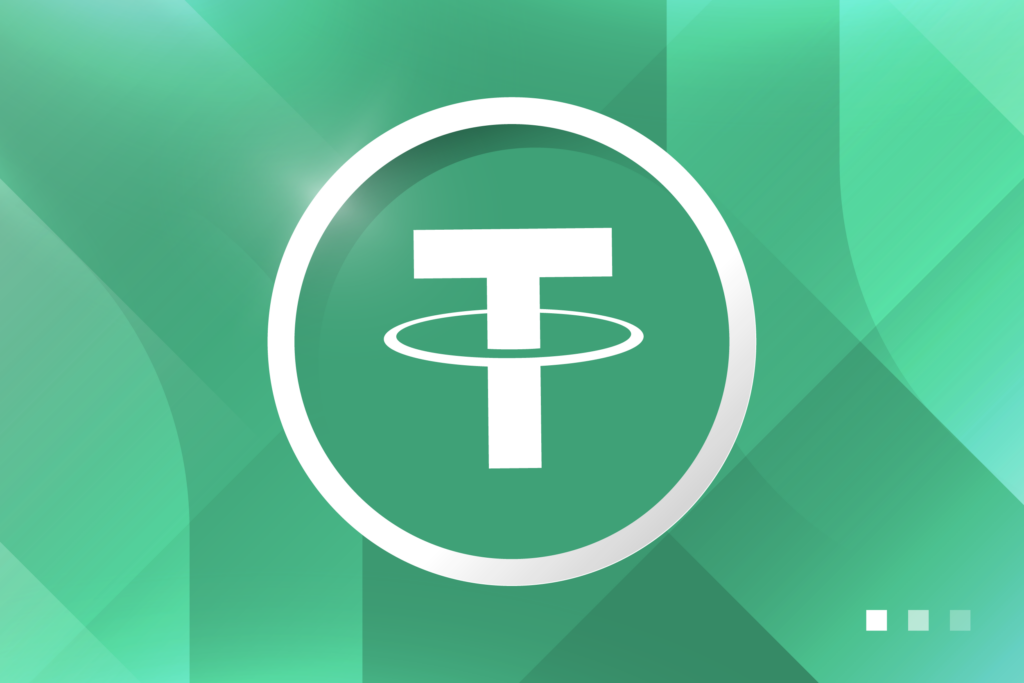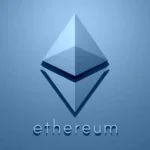USDT, or Tether, is one of the most widely used stablecoins in the cryptocurrency world. It plays a pivotal role in the ecosystem by providing traders and investors with a digital asset that is pegged to the value of the US dollar (USD). Stablecoins, like USDT, are essential for offering stability in the highly volatile crypto market. This article will explore everything you need to know about USDT, including its history, how it works, its importance in the cryptocurrency space, and some of the controversies surrounding it.
1. What is USDT (Tether)?
USDT is a type of cryptocurrency known as a stablecoin, which means it is designed to have a stable value. The value of USDT is pegged to the US dollar on a 1:1 basis. This means that for every USDT token issued, there is supposed to be an equivalent amount of USD held in reserve to back it up. The goal of USDT is to bridge the gap between fiat currencies and cryptocurrencies, providing a digital version of the US dollar that can be easily traded on cryptocurrency exchanges and used in decentralized finance (DeFi) platforms.
USDT was first issued in 2014 by the company Tether Limited, which claimed that each USDT token was fully backed by US dollar reserves. Since its inception, USDT has become the most commonly used stablecoin in the crypto market, with billions of dollars in daily trading volume.
2. The History of Tether (USDT)
USDT was created by Brock Pierce, Reeve Collins, and Craig Sellars under the company Tether Limited in 2014. Initially, it was called Realcoin, but the name was later changed to Tether. The idea behind Tether was simple: to create a stable digital currency that could be easily traded on cryptocurrency exchanges, offering the stability of the US dollar while enjoying the speed and flexibility of cryptocurrencies.
The need for a stablecoin like USDT arose from the high volatility of other cryptocurrencies, such as Bitcoin and Ethereum. Tether sought to provide a digital asset that would maintain a consistent value, making it easier for users to hedge against market volatility, transfer funds across exchanges, and engage in decentralized finance.
In its early years, USDT was built on the Bitcoin blockchain using the Omni Layer protocol. Over time, Tether expanded to other blockchains, including Ethereum, Tron, and Solana, allowing for more flexibility and faster transaction speeds.
3. How Does USDT Work?
USDT is a fiat-collateralized stablecoin, which means its value is directly tied to an underlying asset, in this case, the US dollar. For every USDT token that is issued, Tether Limited claims that there is one US dollar held in reserves to back it. These reserves can be held in various forms, such as cash, cash equivalents, or other assets.
a) Issuance and Redemption
USDT tokens are created (or minted) when users deposit US dollars with Tether Limited. Once the deposit is verified, the corresponding amount of USDT is issued and sent to the user’s wallet. Similarly, when a user wants to redeem USDT for US dollars, they can send the USDT tokens back to Tether Limited, and the equivalent amount in dollars is withdrawn from the reserves and sent to the user’s bank account.
b) Blockchain Compatibility
USDT was initially issued on the Bitcoin blockchain via the Omni Layer protocol, but it has since expanded to other blockchains. Today, USDT can be found on several blockchain platforms, including:
- Ethereum (ERC-20): The Ethereum network offers smart contract capabilities, and USDT as an ERC-20 token is commonly used in decentralized finance (DeFi) applications.
- Tron (TRC-20): USDT on Tron offers lower fees and faster transaction times compared to Ethereum, making it popular for high-frequency traders.
- Solana: USDT on Solana allows for fast, low-cost transactions on a highly scalable blockchain.
- Algorand, EOS, and Bitcoin Cash: Tether has also been issued on these blockchains to ensure flexibility and support for various ecosystems.
USDT’s multi-chain compatibility allows users to trade and transfer the stablecoin across different platforms, enabling seamless transactions across the crypto ecosystem.
4. The Role of USDT in Cryptocurrency Markets
USDT plays a critical role in the cryptocurrency ecosystem, serving as a bridge between traditional fiat currencies and digital assets. Here are some of the primary uses of USDT:
a) Stability in a Volatile Market
The cryptocurrency market is known for its extreme volatility. Cryptocurrencies like Bitcoin, Ethereum, and others can experience large price swings in a short amount of time. USDT, being pegged to the US dollar, provides stability amidst this volatility. Traders often convert their holdings into USDT during periods of high volatility to protect the value of their portfolio.
b) Hedging Against Price Fluctuations
Many cryptocurrency traders use USDT as a way to hedge against potential price declines. Instead of converting their assets into fiat currency, which can be time-consuming and expensive, traders can easily convert their holdings into USDT on a cryptocurrency exchange. This allows them to exit a volatile asset and stay in the crypto space without moving their funds back to traditional banking systems.
c) Liquidity and Trading
USDT is one of the most liquid assets in the crypto market. Because of its stability and widespread use, it is available on almost every major cryptocurrency exchange. Many traders use USDT to enter and exit positions quickly, as it is paired with almost every cryptocurrency on exchanges.
d) DeFi and Yield Farming
Decentralized Finance (DeFi) has seen explosive growth over the past few years, and USDT plays a significant role in DeFi protocols. Many DeFi platforms offer yield farming opportunities, where users can lend or stake their USDT to earn interest or rewards. USDT’s stability makes it an attractive option for DeFi participants looking to earn passive income while minimizing the risks associated with volatile cryptocurrencies.
e) Cross-Border Payments and Transfers
USDT provides a fast and low-cost method for transferring funds globally. Traditional banking systems can take several days to process cross-border payments, and they often come with high fees. With USDT, users can send money across borders within minutes, with minimal transaction costs. This is especially useful for remittances and peer-to-peer payments.
5. Advantages of USDT
USDT offers several advantages that make it a popular choice in the cryptocurrency ecosystem:
a) Price Stability
The primary advantage of USDT is its price stability. As a stablecoin pegged to the US dollar, it provides a reliable store of value and medium of exchange, which is crucial in a market characterized by significant volatility.
b) Liquidity
USDT is one of the most widely used cryptocurrencies and has high liquidity. It is listed on nearly every major cryptocurrency exchange, making it easy for traders to enter and exit trades with minimal price slippage.
c) Faster Transactions
Compared to traditional fiat transfers, USDT offers faster and cheaper transactions, especially when moving large amounts of money. This is particularly beneficial for cross-border transfers.
d) Multi-Chain Support
USDT’s availability across multiple blockchain platforms provides flexibility for users. Whether it’s Ethereum, Tron, or Solana, users can choose the blockchain that offers the best transaction speed and lowest fees.
e) DeFi Integration
USDT is integral to the DeFi ecosystem, allowing users to participate in lending, borrowing, and yield farming on decentralized platforms. Its stable value makes it a preferred asset for liquidity providers and borrowers in DeFi markets.
6. Controversies Surrounding USDT
Despite its widespread use, USDT has not been without controversy. The most significant concerns revolve around its transparency and the backing of its reserves.
a) Transparency Issues
One of the biggest criticisms of Tether has been its lack of transparency regarding the reserves backing USDT. Initially, Tether Limited claimed that every USDT token was fully backed by one US dollar held in reserve. However, over the years, there have been doubts and concerns about whether Tether truly has enough reserves to cover the total supply of USDT.
In 2019, Tether Limited admitted that not all USDT was backed by actual US dollars, but by a combination of cash, cash equivalents, and other assets. This admission led to increased scrutiny from regulators and the public. Tether has since provided regular attestations from accounting firms to verify its reserves, but the company has yet to undergo a full independent audit.
b) Legal Issues
Tether and its affiliated company Bitfinex have faced legal challenges over the years. In 2021, Tether settled a case with the New York Attorney General’s Office (NYAG) regarding allegations that it had misrepresented the backing of its reserves and covered up losses at Bitfinex. As part of the settlement, Tether agreed to pay $18.5 million and submit quarterly reports on its reserves for two years.
c) Market Manipulation Concerns
Some critics have argued that USDT has been used to manipulate the cryptocurrency market, particularly the price of Bitcoin. Studies have suggested that large issuances of USDT have coincided with significant price increases in Bitcoin, leading to concerns about whether USDT is being used to artificially inflate cryptocurrency prices.
7. The Future of USDT and Stablecoins
Despite the controversies, USDT continues to dominate the stablecoin market, with a market capitalization of over $80 billion as of 2024. It remains the most



